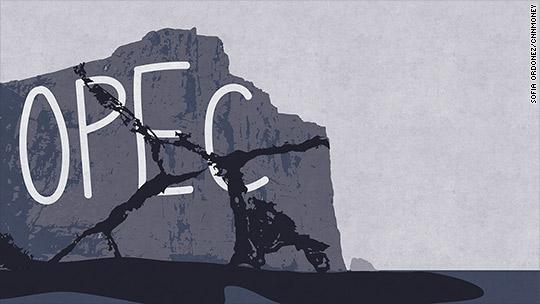Istanbul (AFP) – For cartel OPEC — created in 1960 with the aim of supporting a sustainable price on the oil market — it is in some ways a perfect storm.
Stocks have surged thanks to the rapid emergence of oil from US shale deposits. And due to the abundant supply, the price of oil now stands at currently less than $50 per barrel, around a third of the level of 10 years ago, when it topped a high of $147.
This has been terrible news for the leading members of the group — including Iran, Saudi Arabia and Venezuela — who have seen holes blown in their hydrocarbon-dependent budgets.
Meanwhile, on a longer term horizon, the focus has switched from when “peak oil” will be reached — the moment oil extraction starts to decline due to dwindling resources — to when demand itself could fall.
So the mood as top energy bosses and ministers met at the World Petroleum Congress in Istanbul this week ranged from pensive to sombre.
“It’s hard to come to terms with the fact that this is a different oil industry,” said Daniel Yergin, the vice chairman of IHS Markit, who wrote the acclaimed book “The Prize” on the history of the global oil industry.
“The US will later this year or early next year reach the highest production in its history,” he told the congress.
– ‘Prices are stuck’ –
OPEC has no control over the revolution caused by the production of shale oil in the United States, which is not a member of the cartel.
In a bid to push prices up, OPEC and key non-cartel members — including Russia, but not the United States — agreed coordinated output cuts in December to push up prices.
The cuts were envisaged for six months and extended for another three. But so far, they have had hardly any effect — with oil prices still hovering at 45 dollars a barrel.
The oil industry was confronted by market forces “which are strong, stubborn and as a result we are here today with prices that are stuck… where they were six months ago,” said International Energy Agency (IEA) director Fatih Birol.
“It will be a very, very difficult six months for the oil industry, a case of riding out the storm,” he said.
OPEC Secretary General Mohammed Barkindo admitted there had been “high expectations” that markets would respond to the deal in 2017, but so far these had not been realised.
The failure of the deal to make a difference is particularly irksome for OPEC as compliance — the implementation of the pledges — has been over 100 percent.
Undeterred, OPEC and the non-cartel members party to the deal will have a committee meeting in Saint Petersburg on July 24 to review its effects.
Meanwhile, an effort to tighten coordination, Barkindo revealed that OPEC had held “very useful preliminary meetings” with US shale producers.
OPEC’s own influence has also slipped in recent years and it now counts for just a third of global oil supplies compared with 40 percent a decade ago.
As well as the US shale revolution, the greater importance of additional non-OPEC market players — including Brazil and Mexico — is also being felt, according to Sarah Emerson, head of the US-based Energy Security Analysis.
– ‘Long and complex’ –
Meanwhile, rapid global changes could also hit demand for oil in the long term, especially with the expected growth in electric cars.
“At what point demand stops growing is very much linked to the automobile,” said Yergin.
“We are seeing now a convergence of a whole lot of technology which will change the nature of what vehicles are,” he said, pointing also to the growth in ride-hailing apps.
But participants in the congress emphasised that the growth in electric cars was starting from a very low base and petrol would likely still be needed in trucks and planes for years to come.
Renewable energy is also seeing unprecedented growth — encouraged by some traditional oil majors like BP — while companies are under pressure to reduce emissions in line with the Paris Agreement on climate change.
But the chief of the Saudi Arabian energy giant Saudi Aramco, Amin Nasser, said he was optimistic that fossil fuels would remain part of the world’s energy mix for decades to come.
“The renewables still have major challenges and they do not compete with oil,” he said. “The energy transition underway will be a long, complex process,” he added.





















.jpg)


